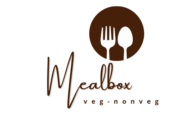A successful restaurant is the result of a combination of factors that come together to create a positive and memorable dining experience for customers. Here are some key elements that contribute to a restaurant’s success
Key elements of a successful restaurant business

What makes a great restaurant? The food, location, service, and setting are just a few factors behind why guests might flock to your restaurant — but there’s a lot of work behind the scenes to bring an exceptional and consistent dining experience every day. A successful restaurant owner knows that, beyond what the guests see, there’s much more to be done to ensure the restaurant is both thriving and sustainable long-term.
While learning how to run a profitable restaurant can seem like rocket science, there are a few key success factors that play an integral part in a restaurant’s success
High-Quality Food

Consistency: Serving consistently great food is key. Customers return because they know they’ll get a good meal every time.
Fresh Ingredients: Using high-quality, fresh ingredients ensures the food tastes better and adds to the restaurant’s reputation.
Innovation: Offering unique and creative dishes that stand out from the competition can make your restaurant memorable.
Exceptional Customer Service
Friendly and Attentive Staff: Customers expect to feel welcomed and valued. Courteous, knowledgeable, and attentive staff contribute greatly to a positive dining experience.
Efficiency: Timely service is essential. Customers don’t want to wait too long for their food or for someone to attend to them.
Personalized Experience: Going the extra mile, like remembering repeat customers or catering to dietary needs, helps build loyalty.
Strong Brand and Concept
Clear Identity: A well-defined concept (whether it’s a casual diner, fine dining, or themed restaurant) helps set expectations for customers and creates a unique identity.
Branding: Consistent branding across menus, decor, online presence, and advertising creates a recognizable identity that resonates with the target audience.
Niche Appeal: Catering to a specific niche (e.g., vegan, farm-to-table, international cuisine) can help attract a loyal customer base.
Location and Ambiance
Prime Location: Being in a high-traffic area, such as a popular street or near businesses or tourist attractions, can bring in more customers.
Comfortable Atmosphere: The ambiance—lighting, music, decor, and cleanliness—should match the concept and make customers feel comfortable and relaxed.

Accessibility: Easy access to parking, clear signage, and online visibility (especially for delivery or reservations) make it easier for people to find and choose your restaurant.
Effective Marketing
Online Presence: A strong social media presence and a well-maintained website can help attract customers, especially with reviews and food photos.
Local Engagement: Being involved in the local community, whether through events, sponsorships, or collaborations, builds goodwill and attracts repeat customers.
Online Reviews and Reputation: Positive reviews on platforms like Google, Yelp, and TripAdvisor are crucial in building credibility and drawing new customers.
Pricing Strategy
Competitive Pricing: Prices should reflect the quality of food, portion sizes, and the dining experience. Offering value for money will keep customers coming back.
Menu Variety: Having a diverse menu with options that cater to different tastes and dietary restrictions allows a wider range of customers to enjoy the restaurant.
Efficient Operations
Streamlined Processes: Good restaurant management involves efficient systems for ordering, inventory, and staff coordination to minimize mistakes and improve turnaround time.
Strong Leadership: A capable and inspiring leader (often the owner or manager) sets the tone for the staff and creates a positive work environment.
Staff Training: Training staff on customer service, food knowledge, and operational procedures ensures a smooth experience for diners.
Financial Management
Cost Control: Managing food costs, labor, and overhead effectively ensures the restaurant remains profitable. Tracking inventory and minimizing waste are essential.
Smart Investments: Regularly upgrading equipment, renovating the space, or introducing new menu items based on customer feedback can help grow the business.
Profit Margins: Balancing quality, pricing, and operational costs is crucial for long-term financial success.
Adaptability and Innovation
Staying Current: Trends in food and dining experiences (e.g., delivery services, sustainability) evolve, and successful restaurants adapt to these changes.
Seasonal and Local Ingredients: Offering seasonal dishes or featuring locally sourced ingredients can create excitement and keep the menu fresh.
Response to Feedback: Listening to customer feedback and adjusting operations, menu items, or services based on their needs shows that the restaurant values its patrons.
Unique Selling Proposition (USP)
What Sets You Apart: A successful restaurant has a USP that makes it stand out from competitors, whether that’s an innovative dish, a famous dessert, exceptional cocktails, or a memorable dining experience.
When these factors align, a restaurant is more likely to build a loyal customer base, maintain profitability, and thrive in a competitive market. It’s the balance of great food, stellar service, effective marketing, and sound management that ultimately makes a restaurant successful
